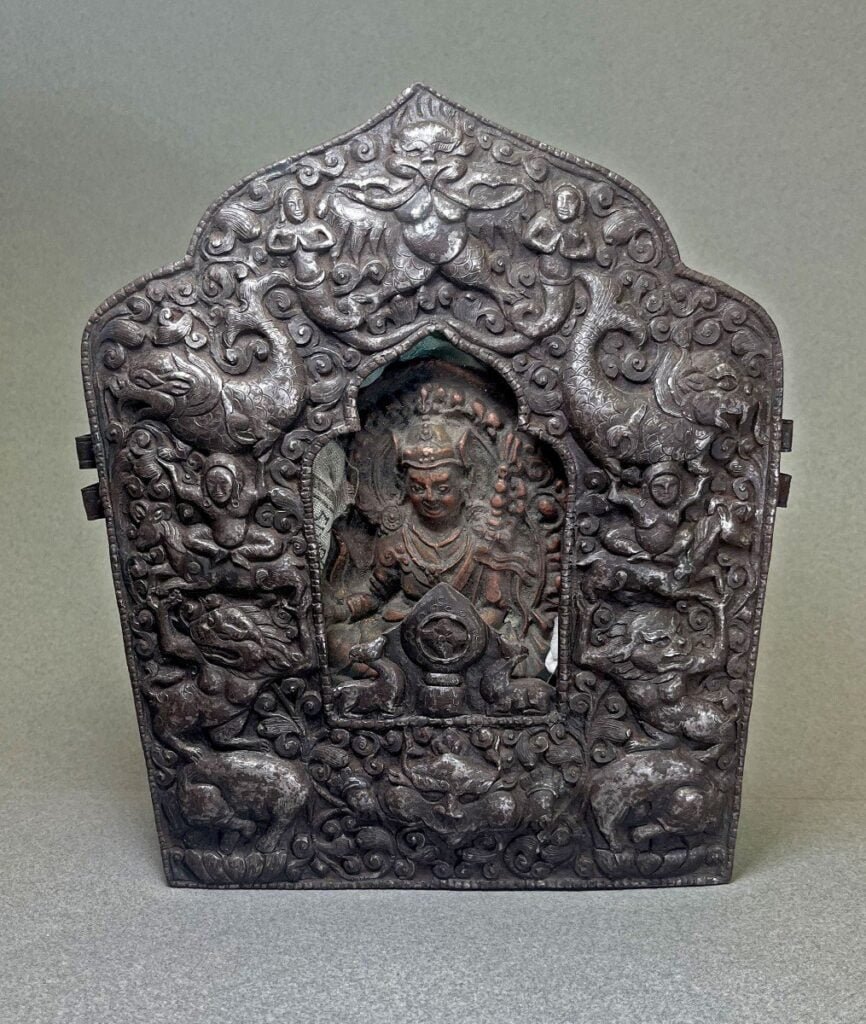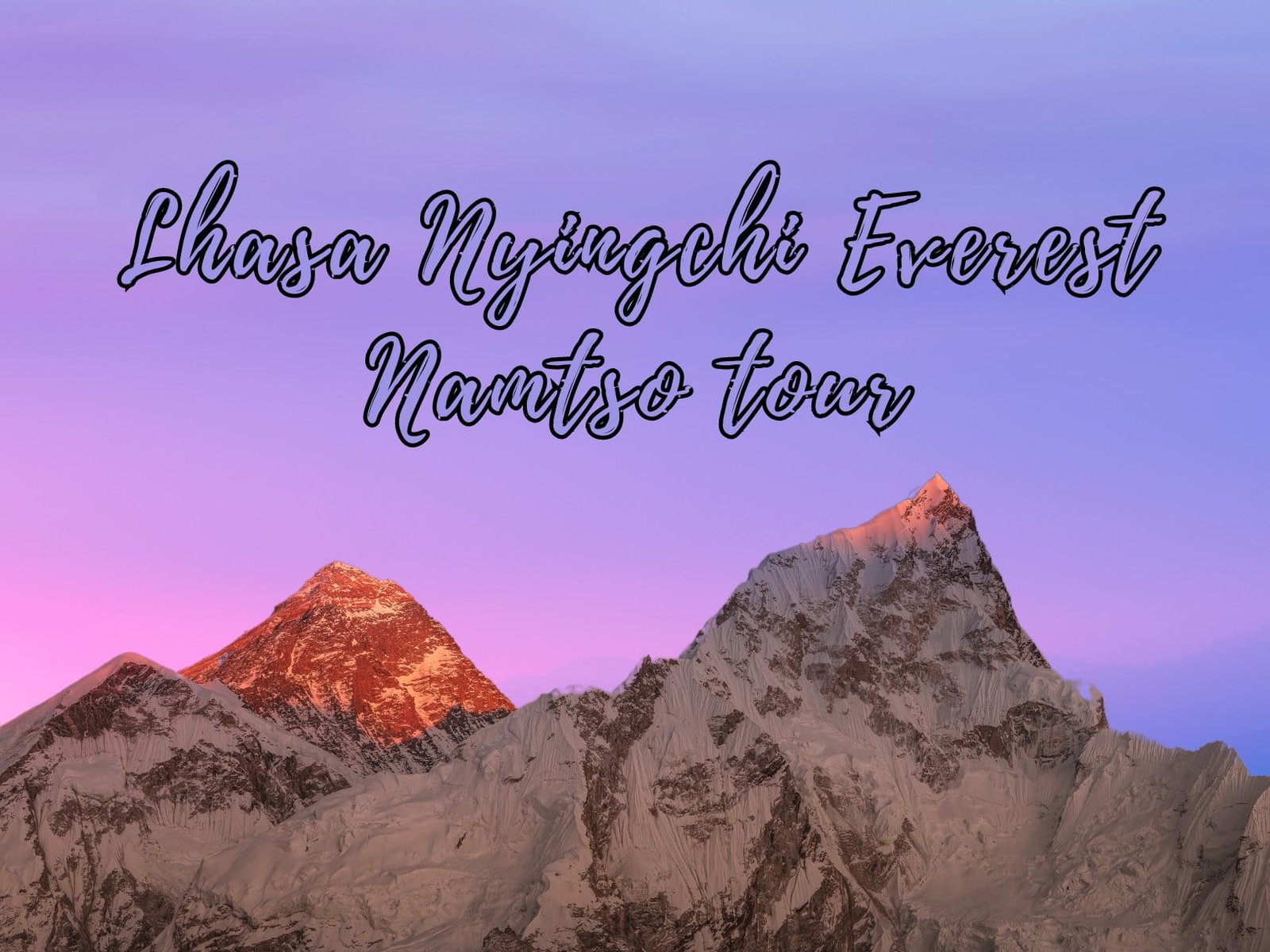The snow lion, described as a white lion with a turquoise mane in Tibetan cultural classics, symbolizes strength, fearlessness, and joy, representing the snow-capped mountains and glaciers of Tibet. It is frequently mentioned in Tibetan folk songs and proverbs believed to live in the highest Himalayas, guarding every aspect of the land. Tibetan people consider the snow lion as a protective guardian of Tibet’s auspiciousness, with its image widely spread throughout Tibetan areas, encompassing all aspects of life and culture, safeguarding the snow-covered plateau.
Snow Lion in Paintings
The snow lion appears in Tibetan paintings within religious scenes, serving as a mount for Buddhas and Bodhisattvas. It showcases majesty and vitality while sometimes being humorously depicted atop snow-covered mountains. This forms a harmonious and auspicious theme alongside deer and double cranes. The Thangka of Maitreya and Manjushri in the Treasure Hall of the Potala Palace displays two Bodhisattvas engaged in a face-to-face discussion about Buddhism.

Additionally, four snow lions of varying shapes adorn the front of the lotus seat. In Buddhist cultural classics, the Buddha is typically depicted seated on a throne supported by eight lions, symbolizing either the eight Bodhisattvas or the Buddha’s eight attendant disciples.
In Tibetan culture, the snow lion is the mount for various Vajra deities, including Vaishravana, Manjushri, Ganesha, and the goddess of longevity. Due to their protective symbolism, snow lions are commonly depicted on both sides of temple gate entrances or carved on building eaves. Snow lions appear to embody patron saints.

snow lion on utensils
The image of the snow lion, which symbolizes protection and auspiciousness, is also widely used on Tibetan utensils.
Chiselled flower inlaid treasure Gawu
“Gawu” is a Tibetan term, which can be rendered in Chinese as either “Buddha niche” or “Buddha box”. This niche is in the form of five leaves and five doors, specifically crafted to house five Buddha statues of different sizes. The surface of the niche is adorned with cursive grass patterns, embellished with various decorations including unique creatures, paired lions, seven political symbols, and eight treasures. Each set of symbols rests upon a lotus seat, creating a complex and magnificent design.

Old Tibetan silver coins
The snow lion is the animal emblem of Tibet, featured on official seals, coins, banknotes, and postage stamps.

Lion head mask
The lion deity acted as the prison emperor’s envoy in the “Ziguduo” dance at the Potala Palace. His performance displayed an enthusiastic and unrestrained stance, highlighting the humanistic principles of repelling evil and fostering kindness.

snow lion in the wind Horse Prayer Flag
The snow lion appears in paintings, utensils, and dances on the wind horse flag on the snowy plateau.
The Lungta flag also called the prayer flag, represents the wind and horse in Tibet. Tibetans hang these colourful prayer flags to connect with gods and Buddhas. Tibetans express their heartfelt wishes and seek blessings from the gods by hanging wind horse flags, whether it’s during festivals or on regular days of joy.

The snow lion is located at the lower right of the Lungta flag
The wind horse flag showcases spells, prayers, auspicious symbols, and animals. The wind horse resides in the centre, while the four corners feature dragons, garudas, tigers, and snow lions. These beings, known as “supernatural creatures from all directions,” bear the blessings of the gods and flutter in the wind across the snow-covered plateau.






